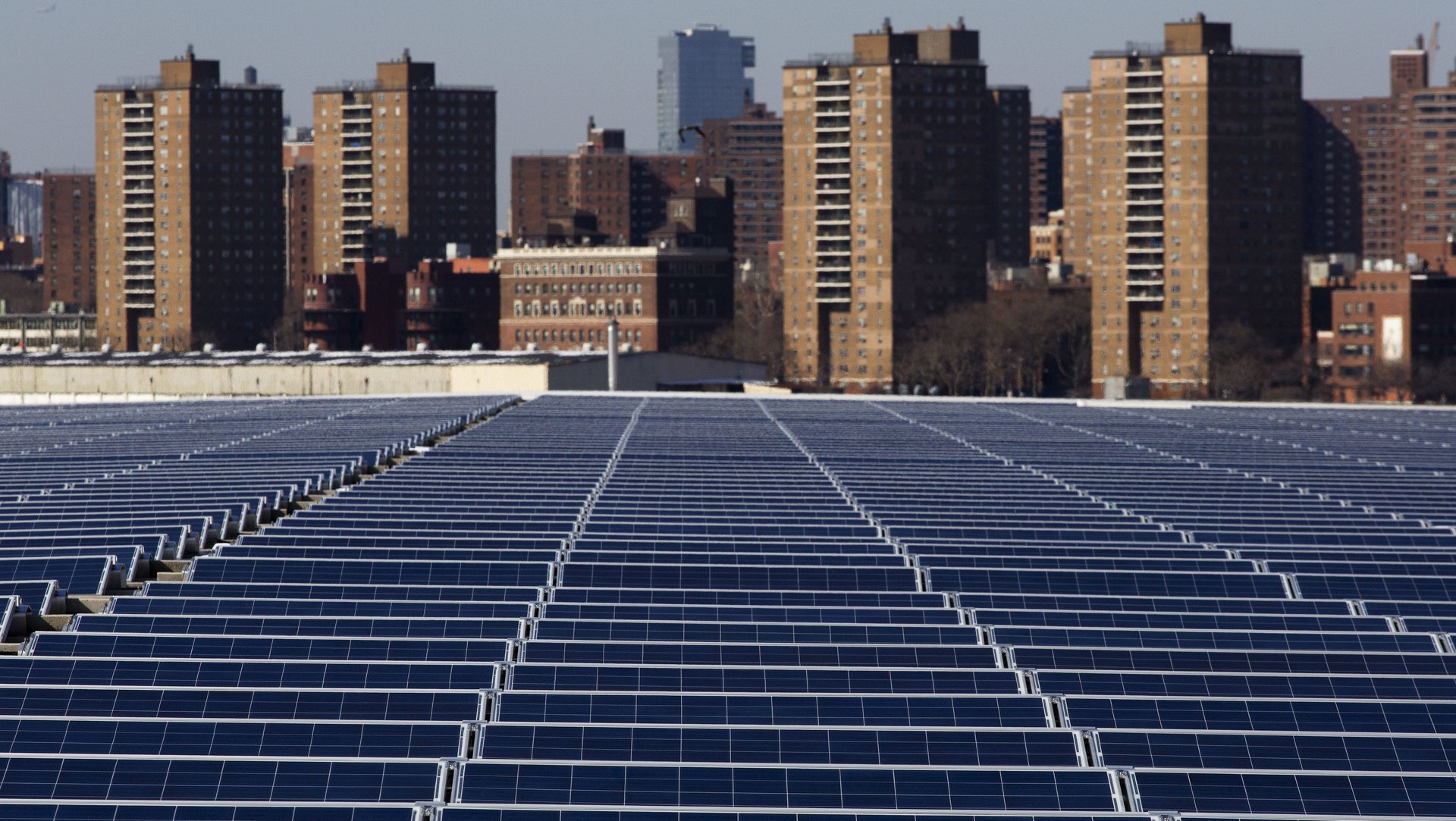Trump is bringing America First to the climate-change economy
Donald Trump just dealt a blow to clean energy in the US.


Donald Trump just dealt a blow to clean energy in the US.
On Monday (Jan. 22), he approved higher tariffs on solar cells and modules made abroad, putting duties as high as 30% (pdf) in the first year and gradually dropping them to 15%. The idea is to protect US manufacturers of solar equipment from cheaper offerings made overseas, especially by Chinese companies. Critics were quick to contend, however, that other parts of the solar energy sector, such as installers that rely on cheap imports, would be hurt by the move.
Installers make up a majority of the industry’s employment. The nonprofit Solar Energy Industries Association predicted that the tariffs would lead to about 23,000 job losses.
Trump’s critics were quick to chime in, as well.
The tariffs are not as high as the 35% sought by the US International Trade Commission. It recommended that figure after it heard a trade case last October from Suniva and SolarWorld, makers of solar panels. Those companies have operations in the United States, although, ironically, both are foreign owned. Suniva, Chinese owned, filed for bankruptcy last year before opening its trade case, which SolarWorld Americas, a subsidiary of a German company, later joined.
Tony Clifford, chief development officer for Standard Solar in Maryland, which finances projects and installs equipment, told the Washington Post (paywall):
“It boggles my mind that this president—any president, really—would voluntarily choose to damage one of the fastest-growing segments of our economy. This decision is misguided and denies the reality that bankrupt foreign companies will be the beneficiaries of an American taxpayer bailout.”
Responding to the tariffs, SolarWorld said in a statement it was “hopeful they will be enough to address the import surge and to rebuild solar manufacturing in the United States.”
There’s little doubt that China has quickly achieved a dominant position in the production of solar equipment, and has ambitions to do even more. According to the US Trade Representative, China, thanks to government subsidies and financing, makes 60% of the world’s solar cells—up from 7% in 2005—and 71% of its solar modules (pdf, p. 3).
US solar installers rely heavily on cheap gear made overseas. The US sources some 80% of its solar panels (paywall) from China and other countries.
Environmentalists worry the tariffs will discourage people from using clean energy, hindering efforts to reduce carbon emissions. MJ Shiao, a researcher with solar-focused GTM Research, tweeted that the tariffs would add 10 to 15 cents per watt to the final installed price of solar panels, which would hurt projects on the cusp but not be “overly destructive” to installments overall.
It’s not the first time the US has targeted Chinese companies selling solar power panels into the US. In 2012, Washington set tariffs at about 30% on some of China’s top solar panel exporters, saying they were selling the products for less than the cost of producing them. The measures this week are much broader, with the tariffs applying to imports of solar equipment from any country (pdf).
But China is the obvious main target. Beijing expressed “strong dissatisfaction” over the move and said it would take the matter to the World Trade Organization. Wang Hejun, head of China’s Trade Remedy and Investigation Bureau, called Trump’s move an “abuse of trade remedy measures.”
Should Beijing win its case, that could open the way for WTO-approved retaliatory tariffs by China on unrelated US products—say, Wisconsin cheese and Kentucky whiskey.
Many economists worry that Trump, with his “America First” policy and more tariffs to come, could spark trade wars and raise prices for American consumers. This week’s move will do little to allay those fears—while casting clouds over much of the US solar industry.